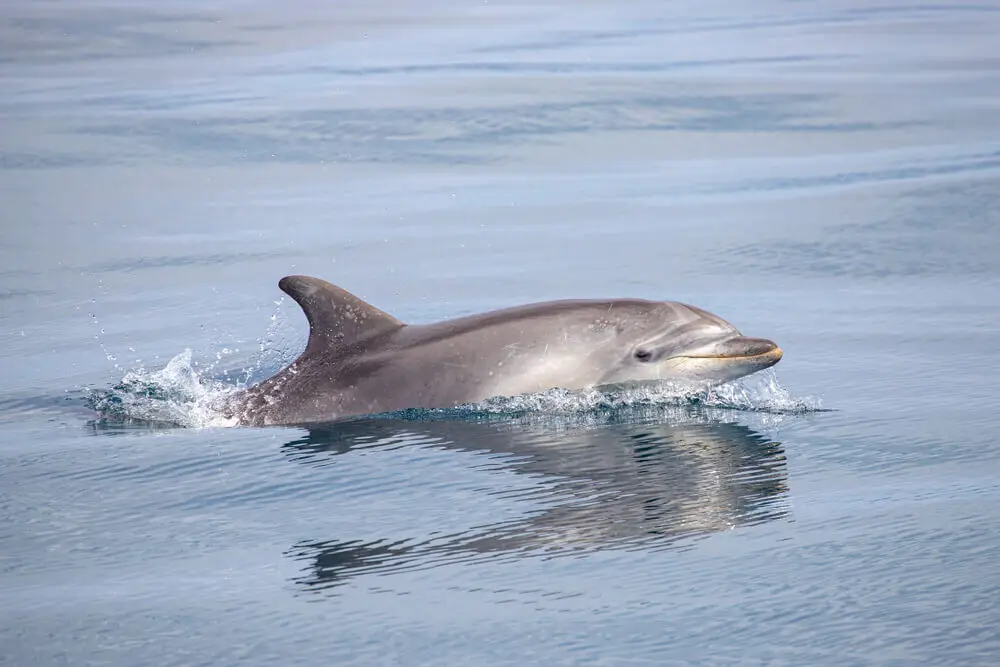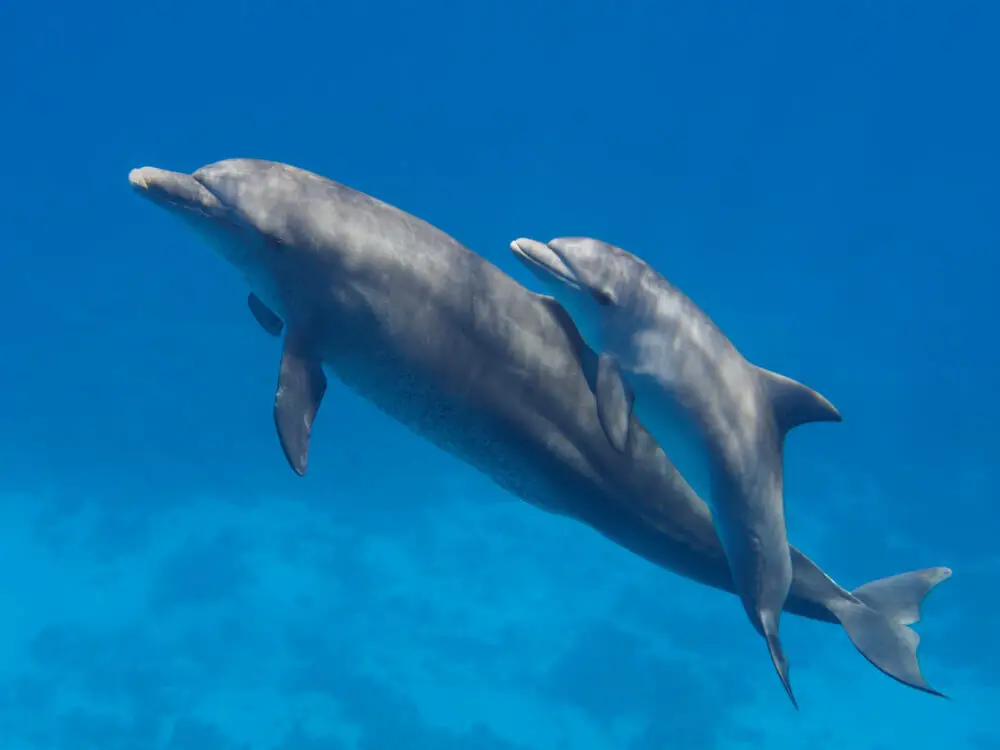Bottlenose dolphin (Tursiops truncatus)- one of the most famous dolphin species, admired for its intelligence, sociability and unique communication abilities. These dolphins are a symbol of the oceans and are often seen in marine shows, research programs, and even in military operations.
Bottlenose dolphins have a complex social structure, a developed language of communication and demonstrate an exceptional ability to learn. How do they navigate underwater? How do they interact with people? What threats do they face? In this article, we will look at morphology, behavior, habitat, food habits, intellectual abilities, threats and conservation efforts.

1. General characteristics and classification
The common bottlenose dolphin belongs to the dolphin family (Delphinidae), which includes more than 40 species of sea dolphins.
🔹 Scientific classification:
✔ The Kingdom: Animals (Animalia)
✔ Type: Chordal (Chordata)
✔ Class: Mammals (Mammalia)
✔ Row: Cetaceans (Cetacea)
✔ In a row: Toothed whales (Odontoceti)
✔ Family: Dolphin (Delphinidae)
✔ Gender: Bottlenose dolphins (Tursiops)
✔ View: Common Bottlenose dolphin (Tursiops truncatus)
🔹 Main Features:
✔ Body length: 2-4 meters.
✔ WeightWeight: 150-650 kg.
✔ Colour: grey-blue or silver, lighter belly.
✔ Chairman: characteristic arched forehead (melon) and well-defined muzzle.
✔ Life spanAge range: 40-60 years.
✔ Mental abilities: one of the most intelligent marine mammals.
The bottlenose dolphin has a streamlined body shape that allows it to reach speeds of up to 35-40 km / has well as excellent maneuverability in the water.

2. where does the bottlenose dolphin live?
🌍 Habitat range:
✔ Atlantic, Pacific, and Indian oceans.
✔ Mediterranean, Black and Azov Seas.
✔ Coasts of North and South America, Australia, and Africa.
🌊 Environment type:
✔ Coastal waters, 20-50 m deep.
✔ Open ocean, up to 500 m deep.
✔ Estuaries of rivers, lagoons, and bays.
📍 Populations:
✔ There are large groups of bottlenose dolphins along the coasts of the United States, Mexico, and Brazil.
✔ In the Black Sea-a separate population that is under threat.
3. behavior and social structure
Bottlenose dolphins – extremely social animalsThey live in groups of 10 to 50 individuals, although herds of up to 1,000 dolphins can form in the open ocean.
🤝 How do they interact?
✔ Use over 1000 different sounds for communication purposes.
✔ Recognize each other by unique whistles "it's like people's names.
✔ Help sick and injured group members.
🎭 Emotional life
✔ Identify emotions: joy, grief, sadness, fear.
✔ Can play, use objects (branches, seaweed) like toys.
✔ Have complex hierarchical relationships in the group.
🐬 Mind and Learning
✔ Can recognize themselves in the mirror.
✔ Use tricks for hunting (for example, create "mud rings" to capture fish).
✔ Train young animals, passing on knowledge from generation to generation.

4. how do they hunt and what do they eat?
🍴 Basic diet:
✔ Fish (mackerel, cod, herring).
✔ Squid and other cephalopods.
✔ Less commonly crustaceans (shrimps, crabs).
🏃♂️ Hunting tactics:
✔ Use echolocation-make clicks bouncing off the object.
✔ Hunt in groups, driving fish into a "trap".
✔ Sometimes cooperate with fishermen, helping to drive fish into the City.
5. threats to the species
⚠️ Main threats:
✔ Commercial fishing "bottlenose dolphins get caught in nets.
✔ Ocean pollution - plastic, oil and heavy metals poison the water.
✔ Climate change - warming changes their natural range.
✔ Hunting - in some countries (Japan, the Faroe Islands), dolphins are still caught.
6. conservation measures
🌱 What do they do to save bottlenose dolphins?
✔ Create marine reserves.
✔ Adjust fishing industryto avoid accidental trapping.
✔ Don't allow it trapping for marine parks and shows.
🌍 International initiatives:
✔ CITES Convention - ban on international trade in dolphins.
✔ IUCN - Bottlenose dolphins are protected in many countries.
7. Interesting facts about the bottlenose dolphin
✔ They can sleep with one half of your brainwhile the other one remains active.
✔ They have self-awareness, which is proved by tests with a mirror.
✔ Can imitate the sounds of other animals and even human speech.
Bottlenose dolphins can save people by pushing them to the surface.
✔ They are capable of generate ultrasonic pulseswhich can paralyze the fish.
Conclusion
The common bottlenose dolphin is an amazing marine creature whose intelligence and social behavior never cease to amaze scientists. It is a symbol of the oceans, but because of human activity, its population is declining.
Bottlenose dolphin protection is not just about protecting one species, but also protecting the other. conservation of ocean ecosystems in general. So that these amazing creatures will continue to please us in the future, we need to act now! 🐬🌊